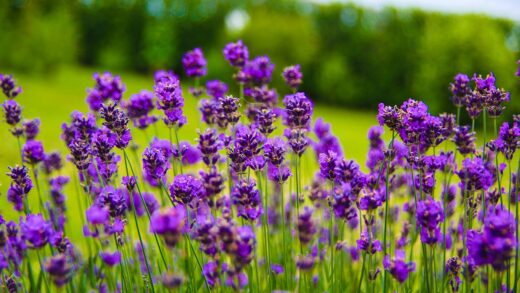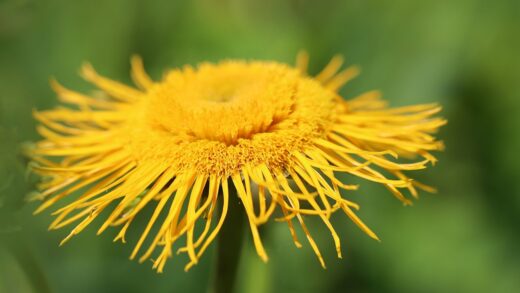The terms “pruning” and “cutting back” often evoke images of shaping shrubs or trimming trees, but in the world of bulbous perennials like the Asiatic lily, these practices take on a different but equally important meaning. Proper cutting is not about controlling the size or shape of the lily, but rather about managing its life cycle to promote the long-term health and vigor of the bulb. Understanding when and what to cut is a crucial aspect of lily care, ensuring that the plant’s energy is directed efficiently towards building a strong foundation for future seasons of spectacular blooms. These timely interventions are simple yet profoundly impactful on the plant’s vitality.
The most common and necessary form of cutting for Asiatic lilies is deadheading, which is the removal of the spent flowers after they have faded. This is a vital housekeeping task for the health of the plant. Once a lily flower has been pollinated, the plant’s natural objective is to produce seeds. This process of seed development requires a significant amount of energy. By removing the withered bloom before it has a chance to form a seed pod, you prevent the plant from wasting its precious resources on reproduction.
Instead of being diverted to seed production, this conserved energy is redirected back down into the bulb. The post-flowering period is a critical time when the bulb is actively storing nutrients and starches that will fuel the following year’s growth and flower display. Deadheading, therefore, is a direct investment in the quality and quantity of next season’s blooms. A lily that is allowed to set seed will often have a weaker display the following year, as its energy reserves will have been depleted.
The process of deadheading is simple. Once a flower has shriveled and lost its color, you can snip it off where its small stem, the pedicel, joins the main flower stalk. You can do this for each individual flower as it fades. Alternatively, once all the flowers on a single stalk have finished blooming, you can remove the entire flower cluster at the top of the stem. It is crucial, however, to leave the main stem and all of its leaves intact. These are the plant’s solar panels and are essential for photosynthesis.
While deadheading is primarily for the health of the bulb, it also has aesthetic benefits. Removing the faded, browning flowers keeps the plant looking neat and tidy in the garden. It allows the lush green foliage to remain the focus of attention after the floral display has concluded. This simple act of snipping off spent blooms is one of the easiest and most effective things you can do to care for your Asiatic lilies and ensure their continued spectacular performance year after year.
More articles on this topic
Cutting lilies for bouquets
Asiatic lilies make absolutely stunning and long-lasting cut flowers for indoor arrangements. However, it is important to harvest them correctly to minimize the impact on the plant’s health. When cutting lilies for a bouquet, the goal is to take a beautiful flower stem while leaving as much of the foliage on the remaining plant as possible. The leaves are essential for producing the food that will nourish the bulb for the next year. As a general rule, you should never remove more than one-third of the stem and its foliage from the plant.
The best time to cut lily stems is in the morning, when the plant is fully hydrated. Look for stems where the lowest bud is showing good color and is just about to open. The other buds on the stem will continue to open indoors over the course of several days, extending the life of your bouquet. Use a sharp, clean knife or pruning shears to make a clean, angled cut on the stem. An angled cut increases the surface area for water absorption.
Immediately after cutting, place the stems into a bucket of cool water. Once you have brought them inside, you can re-cut the stems underwater to prevent air bubbles from entering the vascular system, which can block water uptake. Remove any leaves that will be below the waterline in the vase, as submerged foliage will rot and foul the water, shortening the life of your flowers. Using a floral preservative in the vase water will also help to prolong their beauty.
While it is tempting to cut many stems for a lavish display, remember that each stem you remove reduces the bulb’s ability to store energy. For the long-term health of your lily patch, it is best to be selective. If you have a large, well-established clump, cutting a few stems will not cause significant harm. However, for a newly planted lily or a small clump, it might be better to enjoy the flowers in the garden and allow the plant to dedicate all of its energy to strengthening its bulb.
More articles on this topic
The importance of leaving the foliage
After the lily has finished blooming and you have deadheaded the spent flowers, a common mistake gardeners make is to cut back the remaining stem and foliage too early. It is absolutely essential to resist this urge. The green stem and leaves, although no longer accompanied by flowers, are now performing their most critical function of the year: photosynthesis. They are working hard to capture sunlight and convert it into the sugars and starches that are transported down to the bulb for storage.
This energy storage process is what determines the success of the following year’s display. A bulb that has been well-nourished by a full season of healthy foliage will be large and packed with the energy needed to produce a tall, strong stem and a multitude of vibrant flowers. If you cut the foliage back while it is still green, you are effectively starving the bulb and severely compromising its ability to perform well next year. The result will be a weaker plant with fewer, smaller flowers, or potentially no flowers at all.
The foliage should be left completely intact on the plant throughout the late summer and into the autumn. During this time, continue to provide the plant with adequate water to support the photosynthesis process. You only need to intervene if you see signs of disease, in which case the affected leaves can be removed to prevent it from spreading. Otherwise, the best course of action is to simply let the plant be.
The lily itself will tell you when it is the right time to cut back the foliage. As autumn progresses and the days get shorter and cooler, the leaves will naturally begin to turn yellow and then brown. This is a clear signal that the process of photosynthesis is complete and the bulb has entered dormancy. The plant has finished its work for the season, and all the available energy has been stored away underground for its long winter rest.
The final cut in autumn
Once the lily foliage has completely died back and turned brown, it is time to make the final cut of the season. At this stage, the stem and leaves are no longer providing any benefit to the plant. Leaving the dead foliage in the garden over winter can be unsightly and, more importantly, it can provide a place for pests and fungal spores to shelter until the spring. A thorough autumn cleanup is an important part of good garden hygiene and disease prevention.
Using a clean pair of pruning shears, cut the dead stalks down to about one to two inches from the soil line. This makes the garden bed look neat and tidy for the winter and removes the potential overwintering sites for problems. After cutting back the stems, you can dispose of the dead foliage in your compost pile, unless you have had a significant issue with disease during the growing season. If disease was present, it is safer to bag the debris and dispose of it in the trash to avoid reintroducing the pathogens into your garden.
This final cut is also a good opportunity to add a layer of compost or well-rotted manure around the base of the plants. This will provide a slow-release source of nutrients for the following spring. For those in colder climates, this is also the time to prepare for winter mulching. After cutting back the stems and once the ground has frozen, you can apply a protective layer of mulch to insulate the bulbs over the winter.
This disciplined approach to cutting back—deadheading after bloom, harvesting for bouquets thoughtfully, leaving the foliage to die back naturally, and making a final clean cut in the autumn—is a simple rhythm to follow. It respects the natural life cycle of the Asiatic lily and ensures that the plant’s energy is managed in a way that promotes robust health and guarantees a spectacular and reliable floral performance for many years to come.


















